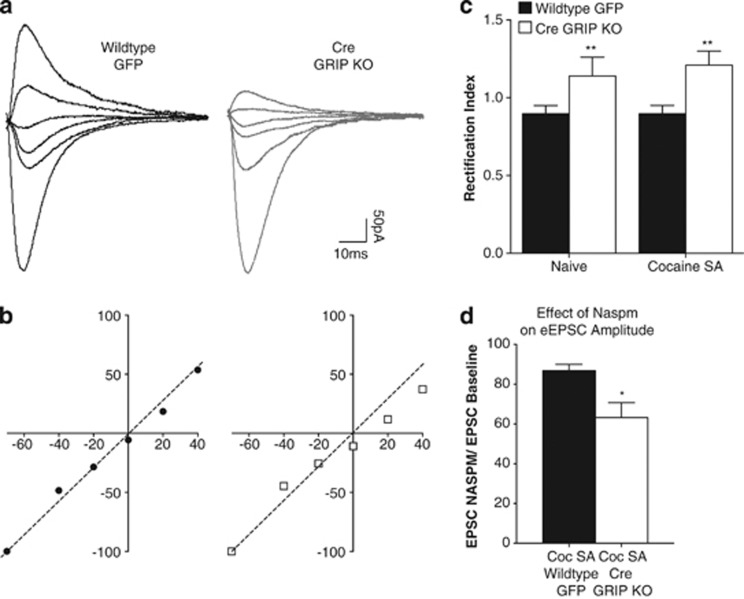Figure 5.
Glutamate receptor-interacting protein (GRIP) knockout leads to an increase in rectification associated with an increase in calcium-permeable AMPARs (CP-AMPARs). (a) Representative traces of AMPAR-mediated excitatory postsynaptic currents (EPSCs) recorded at +40, +20, 0, −20, −40 and −70 mV in neurons from cocaine-experienced wild-type and GRIP KO mice. (b) I–V plots of normalized and averaged AMPAR EPSCs of wild-type (black circles) and GRIP KO (gray squares) mice. (c) Quantification of rectification index reveals an increase in rectification following GRIP deletion regardless of cocaine history (naive WT: 0.90±0.05, n=10; naive GRIP KO: 1.14±0.12, n=14; cocaine SA WT: 0.90±0.05, n=12; cocaine SA GRIP KO: 1.21±0.09, n=21; main effect of viral injection: F(1,53)=7.97, **p=0.0067). (d) As indicated by the EPSC Naspm/EPSC baseline ratio, Naspm sensitivity in cells from cocaine-experienced GRIP KO mice was higher than in cells from cocaine-experienced wild-type mice (cocaine SA WT: 86.75±3.16, n=6; cocaine SA GRIP KO: 63.20±7.48, n=6; t(10)=2.31, *p=0.02).

